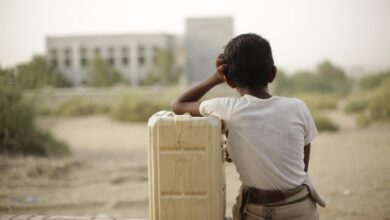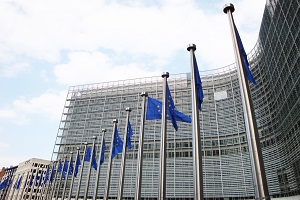Sustainable Land Management | Земельные и водные ресурсы | Продовольственная и сельскохозяйственная организация Объединенных Наций | Land & Water
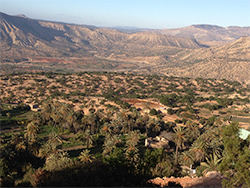
The United Nations defines sustainable land management (SLM) as “the use of land resources, including soils, water, animals and plants, for the production of goods to meet changing human needs, while simultaneously ensuring the long-term productive potential of these resources and the maintenance of their environmental functions”.
TerrAfrica (2005) defines SLM as “the adoption of land-use systems that through appropriate management practices enable land users to maximize the economic and social benefits from the land while maintaining or enhancing the ecological support functions of the land resources”.
The productivity and sustainability of a land-use system is determined by the interaction between land resources, climate and human activities. Especially in the face of climate change and variability, selecting the right land uses for given biophysical and socio-economic conditions, and implementing SLM, are essential for minimizing land degradation, rehabilitating degraded land, ensuring the sustainable use of land resources (i.e. soils, water and biodiversity) and maximizing resilience.
Sustainable land use and management (human activities) decide the sustainability/resilience or degradation/vulnerability of land resources

Source: FAO, CLIMATE-SMART AGRICULTURE Sourcebook, Module B.7 Sustainable Soil/Land Management for Climate-Smart Agriculture
SLM encompasses established approaches such as soil and water conservation, natural resource management and integrated landscape management (ILM). It involves a holistic approach to achieving productive and healthy ecosystems by integrating social, economic, physical and biological needs and values, and it contributes to sustainable and rural development.
SLM is based on four principles:
- targeted policy and institutional support, including the development of incentive mechanisms for SLM adoption and income generation at the local level;
- land-user-driven and participatory approaches;
- the integrated use of natural resources on farms and at the ecosystem scale; and
- multilevel, multistakeholder involvement and partnerships at all levels – land users, technical experts and policy-makers.
FAO’s SLM mandate and comparative advantage
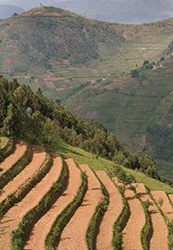
FAO has a mandate to: support its member countries and partners in developing or reforming norms, standards and policies; provide technical advice; and implement national and local programmes through capacity development and technical knowledge management activities.
FAO implements a range of SLM-related programmes and approaches, such as farmer field schools; conservation agriculture; catchment- and farm-scale approaches to integrated land and water management and land husbandry; gestion des terroirs and local land-use planning; integrated plant and pest management; and sustainable forest management.
FAO is the custodian UN agency for 21 indicators of the Sustainable Development Goals (SDGs), cutting across SDGs 2, 5, 6, 12, 14 and 15, and it is a contributing agency to four other SDG indicators. FAO has a strong comparative advantage in its capacity to assist countries in meeting the monitoring challenge posed by the SDGs. Activities are under way for country-level collaboration in the development of indicators for land; land degradation; soils; drought; sustainable forests and mountains; sustainable land management; water efficiency and scarcity; women’s access to land ownership; food losses and waste; and others.
FAO is executing a number of projects, funded by the Global Environment Facility (GEF), addressing transboundary land degradation issues, including: “Integrated Management of the Fouta Djallon Highlands”; “Globally Important Agricultural Heritage Systems”; “Transboundary Agro-ecosystem Management Programme for the Kagera Basin”; “Using Farmer Field School Approaches to Overcome Land Degradation in Agropastoral Areas of Eastern Kenya”; and “Integrated Natural Resources Management in Drought-prone and Salt-affected Agricultural Production Landscapes in Central Asia and Turkey” (CACILM2) (in development).
FAO also implements integrated land resource planning strategies through a wide range of complementary SLM approaches, tools and measures adapted to different biophysical and socio-economic contexts.
Land degradation and desertification threaten the food security and livelihoods of millions of people, especially in drylands. Promisingly, after many decades of on-the-ground work on SLM approaches and practices, many SLM options are available for reversing these negative trends. FAO is prioritizing the identification of affected communities and target areas for implementing locally suitable SLM options for managing land resources with the overall goal of scaling up SLM over large areas.
FAO-developed similarity analyses are used to match areas of interest with areas where farmers have tested, fine-tuned and implemented SLM technologies and where water and land management packages might be applied. Professionals, planners and decision-makers can use the information and products generated from these analyses to identify the most suitable SLM practices and technologies for targeted areas and communities. ILM and land resource planning are other tools for supporting decision-makers and land users in choosing suitable land uses and SLM practices for local biophysical and socio-economic circumstances.
Announcing new SLM projects
 FAO launched the GEF-supported project, “Decision Support for Scaling up and Mainstreaming Sustainable Land Management (DS-SLM)” in September 2015. The project has 15 participating countries in Africa (Lesotho, Morocco, Nigeria and Tunisia), East and South Asia (Bangladesh, China, the Philippines and Thailand), Europe and Central Asia (Bosnia and Herzegovina, Turkey and Uzbekistan), and South and Central America (Argentina, Colombia, Ecuador and Panama). FAO provides technical support, alongside the project’s main scientific partner, the World Overview of Conservation Approaches and Technologies (WOCAT) Consortium, the secretariat of which is located in the Centre for Development and Environment at Bern University.
FAO launched the GEF-supported project, “Decision Support for Scaling up and Mainstreaming Sustainable Land Management (DS-SLM)” in September 2015. The project has 15 participating countries in Africa (Lesotho, Morocco, Nigeria and Tunisia), East and South Asia (Bangladesh, China, the Philippines and Thailand), Europe and Central Asia (Bosnia and Herzegovina, Turkey and Uzbekistan), and South and Central America (Argentina, Colombia, Ecuador and Panama). FAO provides technical support, alongside the project’s main scientific partner, the World Overview of Conservation Approaches and Technologies (WOCAT) Consortium, the secretariat of which is located in the Centre for Development and Environment at Bern University.
The DS-SLM project builds on existing SLM practices and experiences in target landscapes in each partner country by scaling up and mainstreaming strategies and actions, supported by a global knowledge management platform on SLM and ILM. The project will make relevant tools and methods available for planning, management, monitoring and impact assessment and by sharing experiences within and between regions, and it will develop and test strategic guidance and approaches for scaling up and mainstreaming. In particular, the project will build capacity in the 15 partner countries in three interlinked components: 1) national and local decision support for combating desertification, land degradation and drought (DLDD) and promoting the mainstreaming and scaling up of SLM best practices; 2) the development of a global DLDD and SLM knowledge management and decision-support platform; and 3) monitoring and evaluation, impact assessment, and the dissemination of project results.
There is a separate page for projects, it is necessary to arrange the cross-referencing between the different pages (themes) and the projects as almost all projects are linked to more than one page (theme).
Integrated approaches on food security
FAO is supporting the governments of Burundi and Uganda (the latter jointly with the United Nations Development Programme) in tackling the major drivers of environmental degradation through a holistic, integrated approach to enhancing agricultural productivity in smallholder systems where food insecurity is linked directly to agriculture. The pro-poor and inclusive approach aims to mainstream gender and nutrition as crucial issues for achieving food security. The project is part of a GEF regional programme involving several agencies, 11 country projects, and a regional hub project with three components: 1) strengthened institutional framework and support mechanisms; 2) improved livelihoods and food security though integrated natural resource management; and 3) the monitoring and assessment of global environmental benefits and socio-economic impacts. Two projects have been submitted to the FAO project review committee and GEF for approval, with the aim to start implementation in mid-2017.
Support for sustainable food production and enhancement of food security and climate resilience in Burundi’s highlands
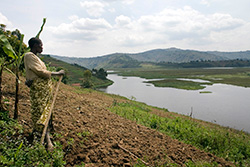 Land degradation in Burundi’s highlands is leading to declines in agricultural production and the loss of agrobiodiversity and contributing to food shortages, food insecurity, chronic malnutrition, land and social conflicts, poverty, rural–urban migration, and increased vulnerability to climate change. This project has the specific objective of increasing the adoption of resilient, improved production systems for sustainable food security and nutrition through ILM and sustainable food value chains. It will achieve this objective through a range of outcomes, as set out below.
Land degradation in Burundi’s highlands is leading to declines in agricultural production and the loss of agrobiodiversity and contributing to food shortages, food insecurity, chronic malnutrition, land and social conflicts, poverty, rural–urban migration, and increased vulnerability to climate change. This project has the specific objective of increasing the adoption of resilient, improved production systems for sustainable food security and nutrition through ILM and sustainable food value chains. It will achieve this objective through a range of outcomes, as set out below.
- Multistakeholder and multiscalar platforms in support of policy and institutional reform, and a knowledge-sharing mechanism for scaling up SLM and ILM, are in place.
- Increased land area and agro-ecosystems under SLM and ILM best practices and improved market access and value chains, leading to enhanced and sustained production and livelihoods
- A monitoring and evaluation framework is in place, and relevant institutions are capacitated in carrying out monitoring activities and communicating experiences and results.
The project will be implemented on the ground in eight selected microcatchments in Burundi’s Gitega, Mwaro and Muramvya provinces in the highland agro-ecosystem east of the Congo–Nile watershed divide. The project will also catalyse transformational change across a wider area by providing training and knowledge management products for partner (co-financing) projects, with a gender-sensitive focus. At the national level, the project will support an incremental increase in capacity to realize and monitor the win–win–win benefits of ILM and SLM.
Fostering sustainability and resilience for food security in the Karamoja subregion
This project seeks to respond to chronic food insecurity in the Karamoja region caused by environmental degradation and climate change, among other things. Most people in the region experience year-round or seasonal food shortages in the face of increasing droughts. The project seeks to achieve its objective through three outcomes: 1) development and strengthening of multistakeholder platforms that will enable better planning, including landscape-based planning; 2) channelling investments into resilient and adapted food production systems and value chains using a farmer field school approach adapted to the realities of the agropastoral communities in Karamoja and their need for enhanced food and nutritional security; and 3) supporting the development of monitoring and assessment methodologies and the participatory monitoring of project indicators, global environmental benefits, and socio-economic benefits. The project will develop capacity in sound and resilient production techniques and support efforts to diversify production to increase income and reduce vulnerability to climate shocks. Emphasis will be placed on rehabilitating ecosystem services, particularly land-based services, through agroforestry, natural regeneration and sound pasture management. The project will also target specific activities aimed at women and youth, who are especially vulnerable, to ensure equality of participation and the removal of underlying vulnerabilities. The Sixth Small Grants Programme for Uganda will be channelled as a subproject of this initiative.
